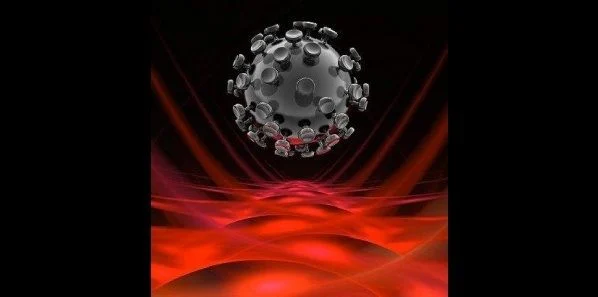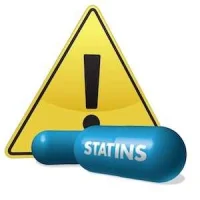Researchers have developed nanometre-sized "drones" that deliver a special type of healing molecule to fat deposits in arteries, which could become a new way to prevent heart attacks caused by atherosclerosis. This research by scientists at Brigham and Women's Hospital (BWH) and Columbia University Medical Center is published online in Science Translational Medicine.
In the study, targeted biodegradable nano "drones" that delivered a special type of drug that promotes healing (resolution) successfully restructured atherosclerotic plaques in mice to make them more stable. This remodelling of the plaque environment would be predicted in humans to block plaque rupture and thrombosis and thereby prevent heart attacks and strokes.
"This is the first example of a targeted nanoparticle technology that reduces atherosclerosis in an animal model," according to co-senior author Omid Farokhzad, MD, associate professor and director of the Laboratory of Nanomedicine and Biomaterials at BWH and Harvard Medical School (HMS). "Years of research and collaboration have culminated in our ability to use nanotechnology to resolve inflammation, remodel and stabilise plaques in a model of advanced atherosclerosis."
Although current treatments have reduced the number of deaths from atherosclerosis-related disease, atherosclerosis remains a dangerous health problem. Atherosclerosis of the coronary arteries is the #1 killer of women and men in the United States, resulting in one out of every four deaths.
In the study, targeted nanomedicines made from polymeric building blocks that are used in numerous FDA-approved products to date, were nanoengineered to carry an anti-inflammatory drug payload in the form of a biomimetic peptide. This peptide was derived from one of the body's own natural inflammatory-resolving proteins called Annexin A1.
The way the nanomedicines were designed enabled this biological therapeutic to be released at the target site, the atherosclerotic plaque, in a controlled manner. In addition to their specific 'sticky' surfaces, their small sub-100 nanometre size is also a key property that facilitates the retention and accumulation of these nanoparticles within the plaques. These nanoparticles are 1,000 times smaller than the tip of a single human-hair strand.
In mouse models with advanced atherosclerosis, the investigators administered nanomedicines and relevant controls. Following five weeks of treatment with the nanomedicines, the team noted that damage to the arteries was significantly repaired and plaque was stabilised. Specifically, they observed a reduction of reactive oxygen species; increase in collagen, which strengthens the fibrous cap; and reduction of the plaque necrotic core. These changes were not observed in comparison with the free peptide or empty nanoparticles.
"These nanomedicines are developed using biodegradable polymers that can break-up over time in the body using the body's natural mechanisms, and can be nanoengineered using scalable chemistries and nanotechnologies, which ultimately can facilitate their rapid translation to the clinic," said co-lead author Nazila Kamaly, PhD, instructor in the Laboratory of Nanomedicine and Biomaterials at BWH and HMS.
The researchers caution that although plaques in mice look a lot like human plaques, mice do not have heart attacks, so the real test of the nanoparticles will not come until they are tested in humans.
"In this study, we've shown, for the first time, that a drug that promotes resolution of inflammation and repair is a viable option, when the drug is delivered directly to plaques via nanoparticles," said co-senior author Ira Tabas, MD, Richard J. Stock professor of Medicine (Immunology) and professor of Pathology & Cell Biology at Columbia.
To be ready for testing in humans, the research team plans to fine-tune the nanoparticles to optimise drug delivery and to package them with more potent resolution-inducing drugs. "We think that we can obtain even better delivery to plaques and improve healing more than with the current peptides," Dr. Tabas said.
Source: Brigham and Women's Hospital
Image Credit: Laguna Design/Science Photo Library/Corbis
In the study, targeted biodegradable nano "drones" that delivered a special type of drug that promotes healing (resolution) successfully restructured atherosclerotic plaques in mice to make them more stable. This remodelling of the plaque environment would be predicted in humans to block plaque rupture and thrombosis and thereby prevent heart attacks and strokes.
"This is the first example of a targeted nanoparticle technology that reduces atherosclerosis in an animal model," according to co-senior author Omid Farokhzad, MD, associate professor and director of the Laboratory of Nanomedicine and Biomaterials at BWH and Harvard Medical School (HMS). "Years of research and collaboration have culminated in our ability to use nanotechnology to resolve inflammation, remodel and stabilise plaques in a model of advanced atherosclerosis."
Although current treatments have reduced the number of deaths from atherosclerosis-related disease, atherosclerosis remains a dangerous health problem. Atherosclerosis of the coronary arteries is the #1 killer of women and men in the United States, resulting in one out of every four deaths.
In the study, targeted nanomedicines made from polymeric building blocks that are used in numerous FDA-approved products to date, were nanoengineered to carry an anti-inflammatory drug payload in the form of a biomimetic peptide. This peptide was derived from one of the body's own natural inflammatory-resolving proteins called Annexin A1.
The way the nanomedicines were designed enabled this biological therapeutic to be released at the target site, the atherosclerotic plaque, in a controlled manner. In addition to their specific 'sticky' surfaces, their small sub-100 nanometre size is also a key property that facilitates the retention and accumulation of these nanoparticles within the plaques. These nanoparticles are 1,000 times smaller than the tip of a single human-hair strand.
In mouse models with advanced atherosclerosis, the investigators administered nanomedicines and relevant controls. Following five weeks of treatment with the nanomedicines, the team noted that damage to the arteries was significantly repaired and plaque was stabilised. Specifically, they observed a reduction of reactive oxygen species; increase in collagen, which strengthens the fibrous cap; and reduction of the plaque necrotic core. These changes were not observed in comparison with the free peptide or empty nanoparticles.
"These nanomedicines are developed using biodegradable polymers that can break-up over time in the body using the body's natural mechanisms, and can be nanoengineered using scalable chemistries and nanotechnologies, which ultimately can facilitate their rapid translation to the clinic," said co-lead author Nazila Kamaly, PhD, instructor in the Laboratory of Nanomedicine and Biomaterials at BWH and HMS.
The researchers caution that although plaques in mice look a lot like human plaques, mice do not have heart attacks, so the real test of the nanoparticles will not come until they are tested in humans.
"In this study, we've shown, for the first time, that a drug that promotes resolution of inflammation and repair is a viable option, when the drug is delivered directly to plaques via nanoparticles," said co-senior author Ira Tabas, MD, Richard J. Stock professor of Medicine (Immunology) and professor of Pathology & Cell Biology at Columbia.
To be ready for testing in humans, the research team plans to fine-tune the nanoparticles to optimise drug delivery and to package them with more potent resolution-inducing drugs. "We think that we can obtain even better delivery to plaques and improve healing more than with the current peptides," Dr. Tabas said.
Source: Brigham and Women's Hospital
Image Credit: Laguna Design/Science Photo Library/Corbis
References:
Omid Farokzhad , Ira Tabas, Gabrielle Fredman, et al. (2015) Targeted nanoparticles containing the proresolving peptide Ac2-26 protect against advanced atherosclerosis in hypercholesterolemic mice. Sci Transl Med,
18 February 2015 DOI: 10.1126/scitranslmed.aaa1065
Latest Articles
atherosclerosis, polymers, nanoparticle, thrombosis, plaque, nanomedicine
Researchers have developed nanometre-sized "drones" that deliver a special type of healing molecule to fat deposits in arteries, which could become a new w...










